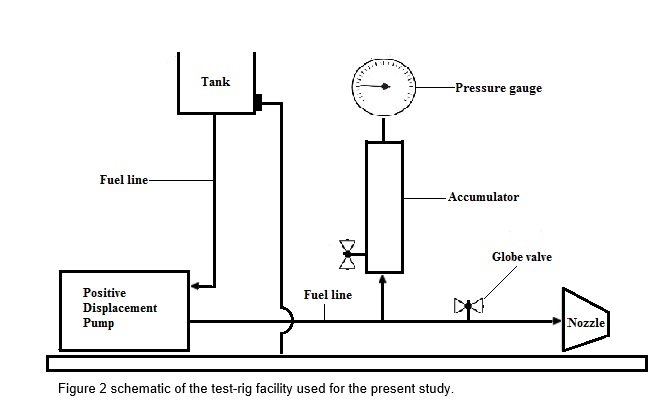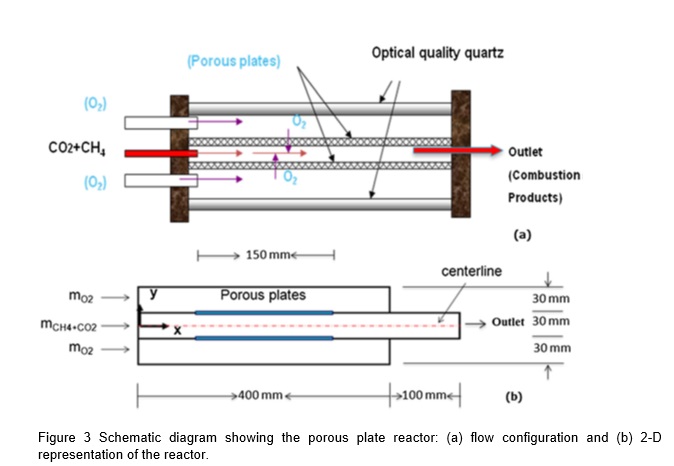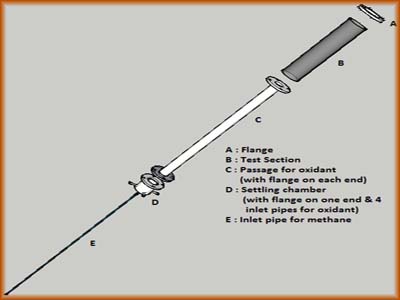Clean Combustion Lab
-clean.jpg?sfvrsn=9c59849_1)
- ME 203 - Thermodynamics I
- ME 204 - Thermodynamics II
- ME 315 - Heat Transfer
- ME 432 – Internal Combustion Engine
- Experiment # 1 Demonstration of Different Engines.
- Experiment # 2 Dismantling of a Single Cylinder SI Engine.
- Experiment # 3 Assembling of a Single Cylinder SI Engine Engine.
- Experiment # 4 Constant Speed Test of a Diesel Engine.
- Experiment # 5 Variable Speed Test of a Diesel Engine.
- Experiment # 6 Morse Test.
- Experiment # 7 Constant Speed Test of Gasoline Engine.
- Experiment # 8 Variable Speed Test of a SI Engine.
- Experiment # 9 Octane Rating by Research Method.
- Experiment # 10 Engine Diagnostics.
- Experiment # 11 Exhaust Gas Analysis.


Equipment:


Fig 1: Oxy-fuel combustion test rig.
A test rig and a converter machine to prepare the bio-fuel from raw oil.
KFUPM Shock Tube
The KFUPM Shock Tube is a facility capable of instantaneously generate a wide range of temperature (700-5000 K) and pressure (0.01-100 bar) conditions. The facility consist of a 8.3-m long driven section with an internal diameter of 18 cm, and a 3-m long driver section. The driver section can be extended up to 5.8-m long using a U-bend shape pipe. Several fast-responding pressure sensors are mounted flush on the last 2 m of the driven section to allow measurement of the shock wave velocity. The test-section include 8 optically accessible ports to allow implementing several optical diagnostics. Two separate mixing tanks are connected to the facility for generating custom gas mixtures.

Key feature
Pressure range from 0.01 to 100 bar.
Temperature range from 700 K to 5000 K.
Large internal diameter of 18 cm.
Research details
Shock tubes are impulse devices that generate a shock wave to instantaneously increase the temperature and pressure of a test section. The generated shock wave, which travels at supersonic speed (several Mach), can be tailored to create a wide range of temperature (500-10,000 K) and pressure (0.01-1000 bar) conditions. Shock tubes are typically implemented to study: (i) the impulse of shock wave on matter such as high-speed aerodynamics, blast waves, and material response; and (ii) the reacting flow behind the shock wave such as gas-phase reactions, fuel chemistry, and hypersonic reacting flows.
A shock tube consists of two long steel tube sections: a driver and a driven section. Before each experiment, a diaphragm is placed between the two sections. The desired test gas or tested object is then placed in the driven section. The driver section is then pressurized until the diaphragm bursts, creating a shock wave that travels through the driven section. This shock wave compresses and heats the gas in the driven section. When the shock wave reaches the end of the driven section, it hits the end flange and reflects back further compressing and heating the gas. This process occurs in a few microseconds to bring the tested gas from room temperature to a desired high temperature and pressure. Objects can also be placed at the end of the driven section to study their properties when encountering shock waves.
The KFUPM shock tube facility is intended to perform research related to the Interdisciplinary Research Center for Hydrogen Technologies and Carbon Management. This research can be classified into four themes: (i) reacting flows at combustion-like conditions towards clean energy applications (e.g., hydrogen and ammonia combustion), (ii) gas-phase processes related to hydrogen production (e.g., hydrocarbon pyrolysis and polygeneration processes), (iii) gas-phase reactions of carbon capture processes (e.g., Autothermal reforming process), and (iv) safety of energy storage systems (e.g., battery thermal runaway and fire suppressant chemistry). However, it should be noted that the shock tube is a versatile device that can be utilized for studying military applications. These include studying combustion of rocket and jet fuels, effect of blast waves on buildings and structures, high-velocity impact testing of protective armor and shelters, aerodynamic flows, and medical research related to injuries from blast waves and explosions.